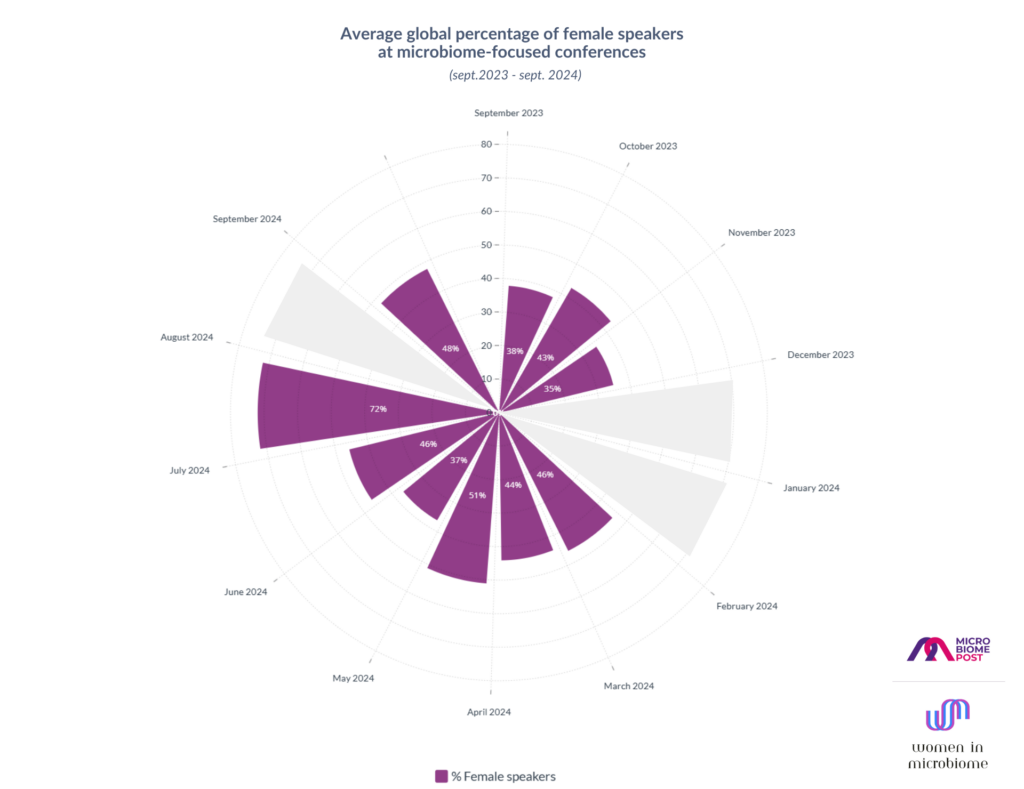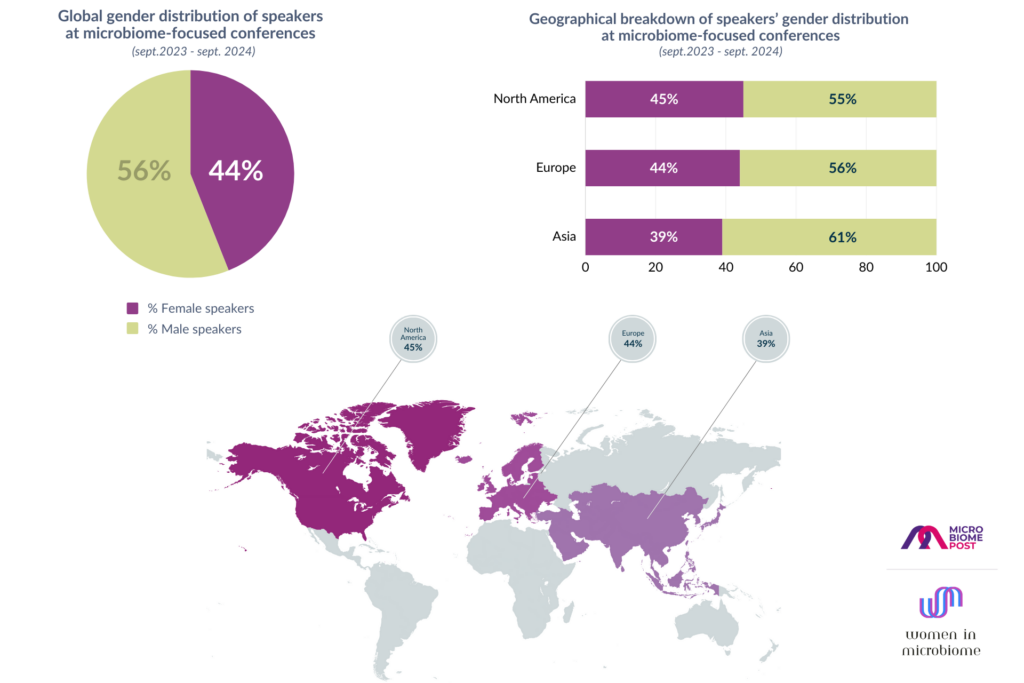Amidst the widespread spotlight on gender inequality across various professional fields, the realm of microbiome stands out as a beacon of progress. An analysis conducted by MicrobiomePost reveals an encouraging trend toward gender parity among speakers at major microbiome-focused conferences globally.
The Study
MicrobiomePost analyzed the gender representation of speakers at the top 30 microbiome conferences (1,500+ speakers) held worldwide from September 2023 to September 2024. The findings indicate that women accounted for 44% of the speakers at these events. This figure marks a promising stride toward gender parity, showcasing the sector’s commitment to inclusivity and diversity.

The analysis also detailed geographical variations in gender representation: North American conferences had the highest female speaker representation at 45%, followed by European conferences at 44%, and Asian conferences at 39%.

A Comparative Perspective
While the microbiome field’s gender representation has not yet reached full parity, the progress is substantial compared to other sectors. The 44% female representation is notably higher than the averages reported in many other fields.
According to a comprehensive study by Bizzabo [1], which examined over 60,000 event speakers from 2013 to 2019 across 58 countries and 45 sectors, only about one-third (33%) of the speakers were women. This stark contrast underscores the microbiome field’s relative success in promoting gender diversity.
Similarly, the Open Society Foundations’ analysis of 23 conferences from 2012 to 2016 revealed low female representation: 24% of panel speakers, 29% of moderators, and 30% of keynote speakers were women [2].
In scientific disciplines like neuroscience, BiasWatchNeuro reported that only 27% of invited speakers at approximately 400 conferences between 2014 and 2018 were women [3].
Future Directions
The data highlights a positive trend, that not only benefits the scientific community by fostering diverse perspectives but also sets a benchmark for other fields to follow.
Nevertheless, to further enhance and sustain this positive trajectory, it would be beneficial to consider strategies such as:
- Establishing mentorship programs for early-career female scientists.
- Encouraging open nominations and applications for speaking opportunities.
- Regularly tracking and publishing data on gender representation at conferences to raise awareness among all stakeholders.
These initiatives are at the core of Women in Microbiome, a network created precisely to promote female participation in the microbiome field. By creating a female-centric space for sharing stories and experiences, its aim is to foster a supportive and inclusive environment for women that, to miscellaneous title, contribute to expand knowledge about the microbiome.
Conclusion
The microbiome research community exemplifies a commendable shift toward gender equality in conference representation. As the field continues to evolve, it is crucial to sustain and build upon these gains to foster an inclusive scientific environment that benefits everyone.
__________________________
[1] https://www.bizzabo.com/blog/event-gender-diversity-study-2019
[2] https://www.opensocietyfoundations.org/uploads/c3f34e39-bcc2-43bc-9cca-cab57e445869/an-end-to-manels-20180308.pdf
[3] https://www.biorxiv.org/content/10.1101/426320v3.full.pdf
We want to hear from you!
📝 We invite you to participate in a short survey designed to gather valuable insights from all genders, across both research and business sectors, to understand perceptions, experiences, and challenges related to gender equality.









